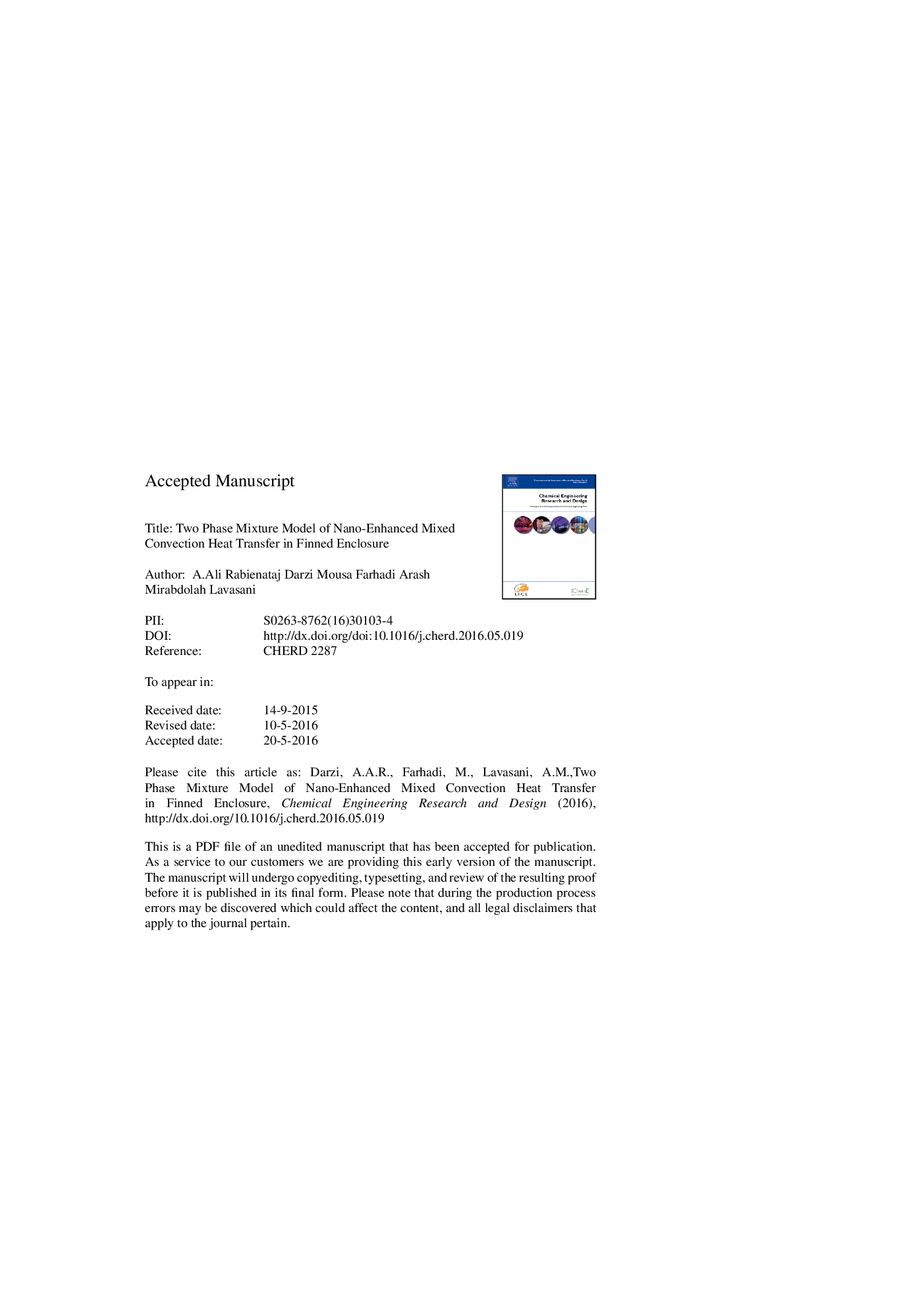| Article ID | Journal | Published Year | Pages | File Type |
|---|---|---|---|---|
| 7006431 | Chemical Engineering Research and Design | 2016 | 27 Pages |
Abstract
This study presents the effect of nanofluid on mixed convection heat transfer inside a lid driven cavity by 2D and 3D numerical simulations. The 3D simulation is performed to examine the accuracy of 2D simulation for mixed convection. Two phase mixture model has been used for simulating the nanofluid. The effect of Brownian motion is considered in determining the effective thermal conductivity of nanofluid. The Richardson number changes from 0.1 to 10. In addition, thin fins have been mounted on hot wall to augment the heat transfer. Results indicate that there is a secondary flow at moderate and high Richardson numbers that 2D simulation cannot predict it. Also, results indicate that 2D simulation overestimated the enhancement of heat transfer at high concentration of nanofluid. Simulation depicts that heat transfer increases by adding low concentration of nano-particles and it decreases with higher concentrations. Adding fins on hot surface increases the heat transfer only at high Richardson number. Fins cannot enhance convective heat transfer at low and moderate Richardson numbers due to a blockage of flow at corners of the fins.
Keywords
Related Topics
Physical Sciences and Engineering
Chemical Engineering
Filtration and Separation
Authors
A. Ali Rabienataj Darzi, Mousa Farhadi, Arash Mirabdolah Lavasani,
